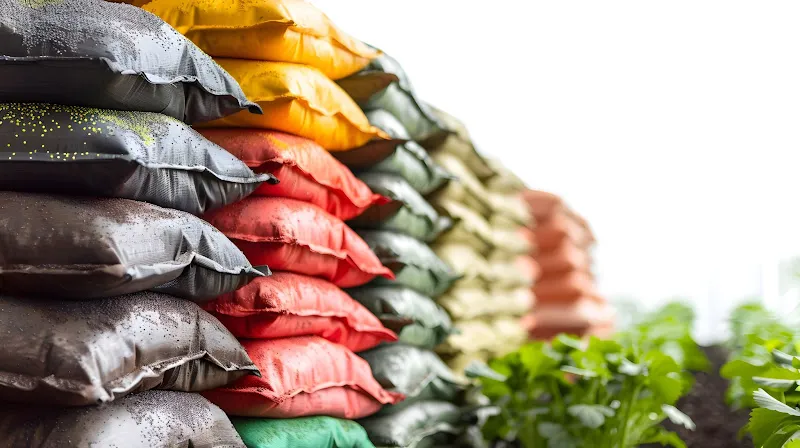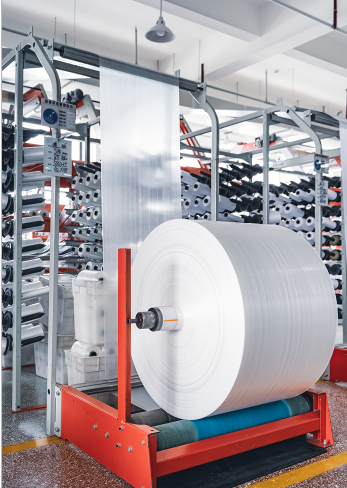Os números nos sacos de fertilizantes indicam a proporção exata de nutrientes, ou seja: nitrogênio, fósforo e potássio, que alimentarão suas plantas ou gramado.
Entender esses números de fertilizantes ajuda você a escolher a fórmula certa para um crescimento saudável, gramados mais verdes e um desenvolvimento radicular mais forte.

Cada saco de fertilizante vem com três números em negrito, geralmente chamados de números de fertilizante. Eles representam a porcentagem em peso dos três nutrientes primários:
É por isso que as pessoas costumam perguntar: “O que significam os números nos fertilizantes?”Simplificando, são os valores NPK, conhecidos abreviadamente como NPK, que significa fertilizante.
Por exemplo, um fertilizante 10-6-4 contém 10% de nitrogênio, 6% de fósforo e 4% de potássio.
O restante do peso da bolsa vem de enchimentos e nutrientes secundários que ajudam a espalhar a fórmula uniformemente.
Os 3 números nos sacos de fertilizantes sempre aparecem na mesma ordem: N, P, K. Vamos analisar cada impacto mais de perto:
Esta fórmula simples explica por que jardineiros e agricultores prestam tanta atenção ao significado dos números de fertilizantes.
Agora que abordamos o básico, vamos dar uma olhada em exemplos específicos do que os números no saco de fertilizante significam na prática:
Comparar fórmulas especiais também levanta questões como: “Qual é melhor, NPK 19 19 19 ou NPK 20 20 20?”
A resposta: ambos são equilibrados, mas 20-20-20 fornece um pouco mais de nutrientes por unidade de peso, o que pode ser benéfico para sistemas de cultivo intensivo.

Nem todas as plantas precisam da mesma fórmula. Escolher a fórmula certa sacos de fertilizante depende dos seus objetivos:
Ao saber exatamente o que os números significam nos sacos de fertilizante, você pode evitar erros comuns, como fertilizar em excesso ou usar a mistura errada para seu tipo de solo.
Além do conteúdo nutricional, os sacos de fertilizante também são projetados para proteger o conteúdo da umidade, da radiação UV e de danos causados pelo manuseio.
O fertilizante precisa ser armazenado com segurança para manter sua eficácia, e é por isso que a embalagem desempenha um papel importante.
É aqui que fornecedores como a Xifa fazem a diferença.
Como um fabricante de sacos de fertilizantes a granelA Xifa fornece soluções de embalagens duráveis que protegem a integridade dessas fórmulas ricas em nutrientes.
Não importa se os clientes precisam de pequenos pacotes de varejo ou grandes sacos de fertilizantes a granel, a Xifa garante que os sacos mantenham a qualidade do produto da fábrica ao campo.
Agora que você entende o significado dos números dos fertilizantes, vale a pena observar que a embalagem do fertilizante em si pode ser adaptada para corresponder ao conteúdo.
Xifa vai além de ser um fabricante de sacos de fertilizantes a granel - eles são especializados em:
Essa personalização é importante porque as fórmulas de fertilizantes variam muito de acordo com a região, o tipo de cultivo e até mesmo o clima.
Ter os números corretos claramente exibidos em um saco de fertilizante durável ajuda a evitar o uso indevido e garante a confiança do agricultor.
Entender o significado dos números de fertilizantes capacita agricultores, jardineiros e paisagistas a tomar decisões mais inteligentes.
Mas o conhecimento é apenas parte da história.
Sem uma embalagem confiável de um fornecedor profissional de sacos de fertilizante a granel, até mesmo o melhor fertilizante pode perder qualidade antes de ser aplicado.
É por isso que empresas no mundo todo fazem parceria com a Xifa, uma fábrica confiável de fertilizantes em sacos a granel e fabricante de sacos de fertilizantes a granel, para embalagens que combinam resistência, clareza e personalização.
Sua capacidade de unir conhecimento técnico com serviços de design os torna um parceiro ideal para qualquer pessoa que lide com sacos de fertilizantes.
Os números nos rótulos dos sacos de fertilizantes são mais do que apenas números: eles são a chave para melhorar a saúde das plantas, o rendimento das colheitas e o equilíbrio do solo.
Ao entender o que os números significam nos sacos de fertilizantes, você pode combinar a fórmula certa às suas necessidades, seja para deixar seu gramado mais verde, cultivar vegetais ou fortalecer raízes.
E quando se trata de embalar essas fórmulas, a Xifa garante que seus fertilizantes cheguem ao usuário final com segurança e claramente rotulados.
Com opções que vão desde embalagens de fertilizantes em grandes sacos até sacos de fertilizantes personalizados, eles garantem que seu produto esteja protegido e pronto para o mercado.
Resumindo, a quantidade correta de fertilizante orienta o que vai para o solo, e o saco de fertilizante certo garante que ele chegue lá com segurança.




